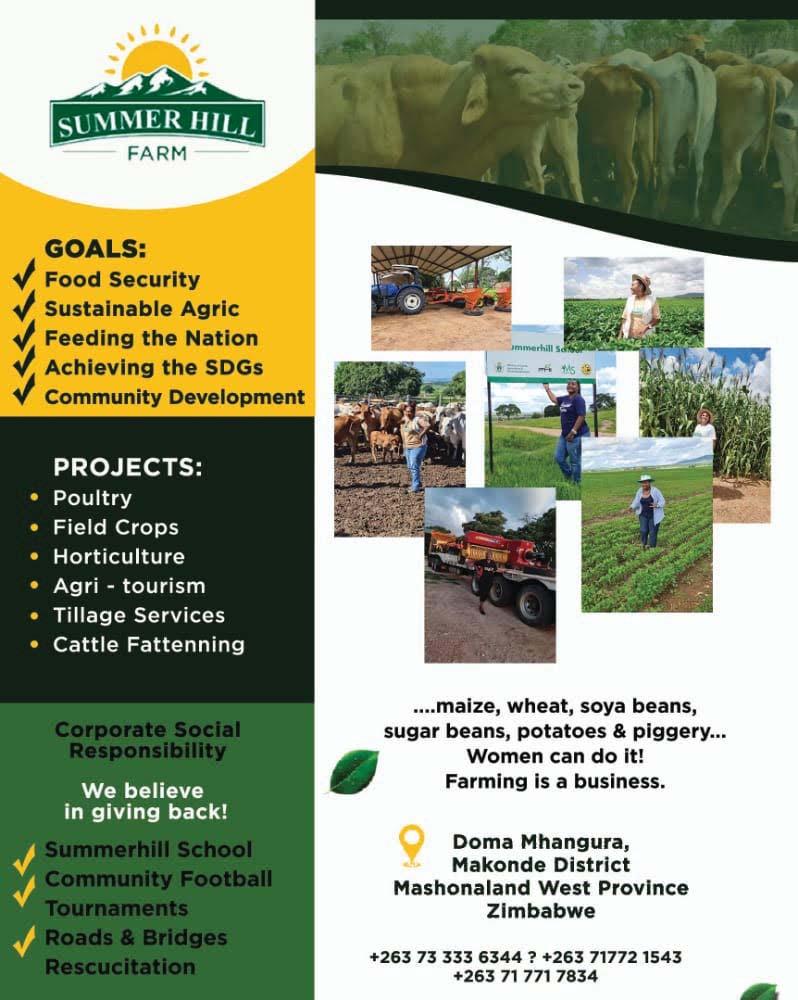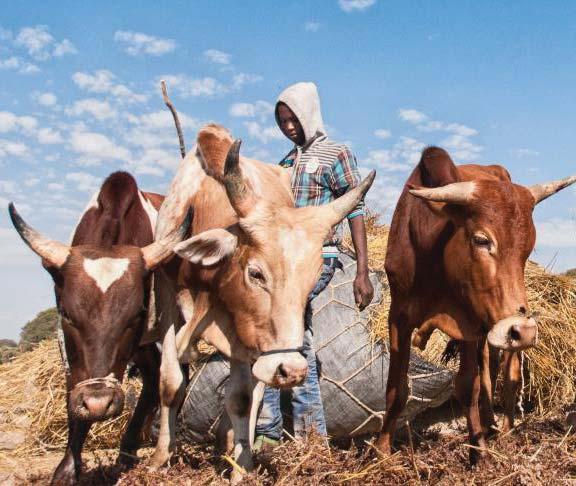
27 minute read
Investment Opportunities In Agriculture, Livestock And Fisheries Sectors In Niger State
NIGERIA Continental Report SPECIAL FOCUS
Investment Opportunities In Agriculture, Livestock And Fisheries Sectors In Niger State
Advertisement
About Niger State
• Located in the North Central Zone of Nigeria • Lies between latitudes 8020’N and 11030’N and longitudes 3030’E and 7020E • 5.562 million population (2018 Projected) comprising of 51.5% male, 48.5% female • 25 Local Government Areas • Climate is subtropical i.e. guinea Savannah with distinct dry and wet seasons. • Diversifi ed agro-ecological condition making possible the production of a wide range of agricultural products. • Availability of land for prospective investors • Abundant raw materials and cheap labour • Availability of Hydro Electric Plants (Kainji, Shiroro Jebba and Zungeru). • Many Rivers e.g Niger, Kaduna, Gurara, Chanchaga etc. • Good Governance. • Largest producer of Rice, Sheanuts and Locust bean seeds. • Presence of Research Institutes/ Higher Educational Institutions such as National Cereals Research Institute Badeggi, National Institute of Freshwater Fisheries Research, IBB University, Lapai; Federal University of Technology, Minna; Federal Polytechnic, Bida and College of Agriculture, Mokwa.
What Makes Niger State Unique?
• Rich and vibrant Arts & culture capable of making the State a tourist destination • Huge and expansive arable land for mechanized farming • Conducive environment for the rearing and management of livestock • Huge potential for excellence in Athletics and other sports. • Large deposit of abundant solid mineral resources unexploited • Receptive and lovable people cohabiting and existing in peaceful environment • Large expanse of wetland most suitable for the development and sustenance of rice farming • Huge forest resources • Amenable and liberal tax system suitable for the growth of SMEs and informal sector enterprises • Proximity to Federal Capital Territo-
14 March, 2022 CHERRYAFRICA
NIGERIA Continental Report
ry (Abuja) • Expanding education sector to serve adult learning, skills training, and foreign student markets • Continued attraction for retirement living based on quality of life and healthy lifestyles
Basic Agricultural Resources
• Total Arable Land – 5.5 million hectares (70%) of total Land Mass • A total of 2.3million Hectares is under cultivation • 2.68m total farming population • 813,000 farming families (2015)
• Over 700,000 hectares of fl ood plains • Sound Agric. Policy framework (Available Niger State Policy on Agriculture and Niger Agricultural State Investment plan documents) • Favorable` environment for Private sector and Development partner Interventions.
Niger State agricultural sector is open to Private Sector participation in entire Agricultural Value Chain involved.
Production Storage Processing Marketing
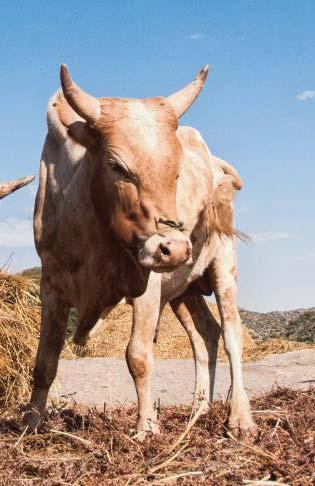
Opportunities/Production (Large Scale Commercial Farming)
1.Production
• Large Scale Commercial Production • Input Service delivery • Fertilizer manufacturing
2. Storage
• Community Warehousing
3. Processing
• Cottage Industries • Agro Industrial Parks • Farm Settlements
4. Marketing
• Specialized market development • Region Cattle and Produce Market • Airport City – Project • Packaging and Branding especially rice • Integrated Retail outlets.
5. Research
6. Biofuel Development • Crops
Rice, Cassava, cotton, maize, sorghum, millet, cowpeas, soybeans, sugar cane. Groundnut, Beniseed (SESAME seed).
• Rice
o Niger State consumes over 1.0 million metric tons per annum. o National consumption outstrips production o Rice consumption in the sub-region doubles every nine (9) years. o Abundant large water bodies (Rivers Niger and Kaduna).
• Cassava
o Niger State is one of the largest producers in the country o Food and industrial sectors growing rapidly o Large domestic import substitution market o Domestic markets very lucrative.
• Cotton
o Growing national demand by textile factories, oil mills and animal feed industry.
• Maize
o Growing world demand o Growing national demand
• Sorghum
o Increasing global demand driven by: o Ethanol Production o Food grade alcohol production o Animal feed industry
• Sugar Cane
o Growing utilization for Ethanol o Nigeria imports about 1.5 million metric tons a year o About 20,000 Ha of land available for sugar cane production o Increasing National demand for sugar.
• Benniseed/Sesame Seed
o Growing world demand o Growing domestic demand o Abundant arable land
• Grazing Reserves
o Niger State has 23 Grazing
Reserves with a combined total of over 123,000hectares
o Two No (2) at Irri and Bobi gazetted and developed o Six (6) undergoing fi nal processes of gazettment
• Irrigation
o Potential area of 682,000Ha. o Fresh surfaces water of 84 million cubic metres o 19 available irrigation schemes (Five developed) and over 21,000Ha (underutilized) o Mambe and Badeggi fl ood plains of the State for available development. o Potential for3 Cycles of Rice Production Annually o Potentials for Dams Development
• Livestock (cattle, fi sh, poultry, sheep and goats)
March, 2022 CHERRYAFRICA 15
NIGERIA Continental Report
• Drivers
o Demarcation of appropriate stock routes o Development of Grazing reserves with essential infrastructure o Provision of Animal health facilities and livestock Extension services. o Dairy development o Feed lot development o Abattoir development o Ranching Development opportunities o Genetic improvement of local breeds, through Artifi cial Insemination (AI).
• Fisheries (Inland, Aquaculture)
o Signifi cant biodiversity o Abundant natural and human resources o Fish imports stand at about 700,000 metric tons annually. o Modern Fish Fingerlings Production Hatchery (2.5million capacity) available for private partnership o Modern fi sh feed mill (2.5MT/Hr capacity) available for partnership
Production (Input Service Delivery)
• Provision of tractors and implements
Very limited Private managed tractors available in the State. Planned increase of at least 300 tractors per annum to be managed by Cooperative farmer groups. Encourage mass use of women/ youth friendly Agricultural Equipment such as power tillers • Establishment and operation Agro Service and Training Centres (ASTCs) in all the 25 Local Government Areas in the State • Encourage private sector managed Fertilizer, Agro Chemicals, improved seeds, veterinary drugs and equipment supply networks.
• Extension Services – (Farmers Education and Training)
Target Extension staff - farmer ratio of 1:500 against the current 1:3,000.
• Drivers
o Deregulation of service delivery schemes o Effi cient subsidy management o Establishment of Farms settlements.
Fertilizer Manufacturing
o Nigeria imports over 700,000 metric tons annually o Niger State is geographically located in the center of Nigeria. o Niger State consumes over 35,000 metric tons each year o Two Fertlizer blending plants (Morris and Zungeru Blending Plants) o Domestic demand in the State is about 70,000mt annually o Available deposit of rock phosphate o Petroleum by products available in large quantities.
Storage o Reactivation, upgrading and management of 5 No. 4,000mt capacity silos. o Construction and management of 1 No. 5,000mt capacity and 6 No. 2,000mt capacity silos. o Construction and management of 9 community warehouses and conditioning centers. o Annual average production of grains in the State is about 1.55 million metric tons.
Processing
o Construction and Management of 3 Agro-industrial parks: crops, Livestock, Fish, Rice, Cassava, Cotton,

16 March, 2022 CHERRYAFRICA
NIGERIA Continental Report
Vegetables and Tomato.
Drivers: o Inadequate capacity to process available paddy rice. o High global demand for processed products. o Over 70% of daily need imported o Unsatisfi ed demand for fi sh and beef as well as low domestic production.
Market Development
o Specialized Market Development o Construction and Management of Regional Cattle and Produce market at Mokwa. o Management of other specialized markets for grains, livestock, fi sh and other commodities. o Establishment of Export Markets (Minna Airport City Market ad proposed Commodity Export Processing Zones). o Packaging and branding o Establishment of packaging plants/ o Integrated Retail outlets o Establishment and management of retail outlets such as large scale supermarkets and shopping malls. o Establishment of grazing reserve/ ranching o Establishment of irrigation schemes for dry season farming o Large-scale crops/livestock farming
Research And Development
o Development of high yielding, disease resistant crop seeds as well as high producing, fast growing brood stock and cattle breeds improvement. o Biotechnology
Drivers
o Current average yield of most crops below potentials o Law milk production and poor beef quality o High demand for animal and fi sh protein o Very limited biotechnology exposure.
Biofuel Development
• Niger State is set to maximize the potentials of cassava and jatropha as feedstock for the growing national and international biofuel markets. Cassava (for ethanol)
Drivers o Niger State currently produces about 300,000mt of cassava per annum. o Estimated ethanol domestic demand of 4b litres/annum. o Growing global market. o Guaranteed 10 years off -take contract from NNPC. o 10 years income tax holiday with possible extension for fi ve years. o Withholding and capital gains tax exemption on dividends, foreign loans and for services produced by foreigners to the bio-fuel fi rms. o Exemption from all import and custom duty in respect to importation of all equipments, inputs, chemicals for use in bio-ethanol production.
Jatropha (for Biodiesel) o About 5,000Ha of degraded land available in the State for immediate use. o Increased global demand for edible seeds. o Global food crises. o With holding and capital gains tax exemption on dividends, foreign loans and for services rendered by foreigners to the bio-fuel company.
Some Incentives For Private Sector Investment In Agriculture
Under the Federal Government of Nigeria’s (FGN) Agricultural Promotion Policy (APP), the intended outcome is to promote Agriculture as a business, integrate agriculture value chain and make agriculture the key driver of Nigeria’s economic growth. To achieve this, the FGN put in place the following measures.
Incentives By Federal Government Of Nigeria
o New fi scal incentive to encourage domestic import substitution. o Removal of restrictions on areas of investment and maximum equity ownership in investment by foreign investors o No currency exchange controls-free transfer of capital, profi ts and dividends. o Constitutional guarantee against nationalization/ exportation of investment. o Zero percent (0%) duty an agricultural machinery and equipment imports o Pioneer tax holidays for Agricultural Investments. o Duty waivers and other industrial related incentives e.g based on use of local raw materials.
Niger State with abundant human and natural resources, diversifi ed agro-ecology and private sector driven agricultural development policies, has also established the Niger State Investment Promotion Agency (NSIPA) to fast track the process of Investments in the State. The State is an emerging agribusiness economy, with viable and unlimited opportunities in all facets of the Agricultural value chain.
March, 2022 CHERRYAFRICA 17
KENYA
How Kenya's Political Activist Became East Africa’s Juice King
By Collins Hinamundi
1992 was a very tiring year in Kenya’s public aff airs, the then President Daniel Arap Moi after years of sustained pressure and a coup attempt, had fi nally agreed to open up the political space, and it was supposed to be pay off time for popular Political activist Kimani Rugendo who was Chairman of Moi’s closest challenger the Ford Asili Party, Asili means Original and this Forum for the Restoration of Democracy claimed to be the Original after a split with Independence Era Doyen Jaramogi Oginga Odinga father of current Presidential contender Raila Odinga.
Kimani’s Ford Asili went into this election with Kenneth Matiba as its presidential candidate, and Rugendo was contesting for MP to represent his home town of Langatta, when the violent election ended, FORD Asili had come a close second to Moi’s KANU, and Rugendo was devastated, he had thrown himself and his life to the service of Kenya, and democracy, and democracy or the closest they could get, had turned its back on him and his ambitions. It was time to re-strategise. “I was never born free. I was born during colonial times where we were not allowed to think for ourselves. Somebody had to think for us.’’ he says about his time in politics. At the time, he ran a popular bar called Jeans bar and owned Sterling Craft which manufacturers pips and regalia for the Kenyan Military.
It was this base, and support from friends that saw him raise start-up capital of over 25 million Kenyan shillings which would be over 200,000 USD in today's money, he started Kevian Limited, and his fi rst brand in 1995 was the Mt Kenyan mineral water. He insists fear did not play a part in his journey, arguing instead for the need for bold decision making and a laser focus on the customer.
“People are always very skeptical about new products. But you always remember, your customer and their comments are vital to you to keep on making your product better and better so that it appeals to the customer daily.” He told the Entrepreneurs Impact group.
From bottled water, the company diversifi ed to Pick ‘N’ Peel and Afi a ready-to-drink juices. With increased demand, Rugendo built a second factory in 2005, increasing the hourly production capacity of Peek ‘N’ Peel to 20,000 litres from the original 5,000 litres.
Afi a is now produced at the rate of over 40,000 bottles per hour, up from 10,000. Rugendo has now started
March, 2022 CHERRYAFRICA 19
KENYA
Continental Report
producing eight carbonated variants of non-alcoholic malt drinks, including Plain Malt, Energy Malt, Lemon Malt and Orange Malt.
In June 2017, Kevian Kenya expanded its product portfolio with a new 17 million dollar investment. It has seen its own brands of coff ee, tomato sauce, and packed vegetable soups targeting middle-class shoppers and high-end hotels. The fresh investment was been funded from Kevian’s internal cash fl ow, and the Thika-based plant now produces 250 tonnes of diff erent beverages per day.
This growth has been supercharged by Pick N’ Peel’s popularity across the East African region where its different fl avours fl y off supermarket shelves and force supermarkets to have stockouts.
Rugendo puts the successes of his products and his business on the fact that he puts his staff at the centre in all his planning.
The culture you build in your organization is the motive for your staff to stay or leave. And this is not very easy. We all come from diff erent backgrounds, and because of that, we react to criticism diff erently.
“My wealth is built on good people, clear conscious thinking people, because that is the basis of a good business.”
Kevian Kenya employs more than 800 direct employees, along with thousands of small-scale farmers who supply the juice manufacturing company with fresh fruits, and a realm of distributors, retailers and wholesalers through partnerships.
He is always iterating, and has an innovation centre at his head offi ce for young people to test out diff erent recipes, and fi nd what works or won’t, and from this, they get real-time customer behaviour especially because he is in an area where consumption of his products is driven by family, and the children’s consumption habits.
“A single miscommunication can spoil your reputation. We are living in a time where information will travel very fi rst, and you have to remember that your reputation is your most important asset.” He says. Running a family business…
While there are no available valuations on his wealth, This journey has turned Kimani Rugendo; this pioneer in the bottled water business into one of Kenya’s richest men. But as it happens with all post-colonial tycoons at a time like this, the fear that they will not always be around sets in.
A family tragedy in 2016 saw his fi rst son and heir apparent Chirs Munange murdered in a robbery, and Rugendo has not spoken about the episode in public, he has also kept the rest of his family out the public eye, but in a family business, he needed a hand and partner and this he found in his wife Hellen. Hellen and Rugendo are the public faces of Kevian, with Hellen taking a more public role.
Agriculture as Africa’s backbone…
Kimani nowadays makes the case for family-owned farms as production units, arguing that these farms can be a solution to rising food insecurity.
“In Ireland, this model has ensured that the country is food secure as the farm is passed from one generation to another,” he off ers.
With the model, the issue of land subdivision or the fi ght for wealth among children, which is rife in Ken-
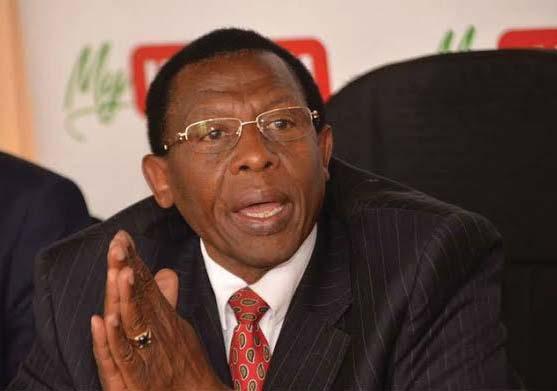
• Rugendo
20 March, 2022 CHERRYAFRICA
KENYA
Continental Report

ya does not arise.
“Here, a man has to split his land among his fi ve to ten sons and daughters. If he had 10 acres, the subdivision makes sustainable farming uneconomical because of the small plots. It is one of the reasons Kenya is struggling to produce food.”
Rugendo, however, acknowledges that the culture of farming as a family must be nurtured through the generations so that the children can be prepared to take over.
“It is time we teach our children how to farm as a family if we are to be food secure. This will also curb cases of land subdivision and enable them to co-exist as they farm. Instead of sharing out the land, why can’t they share the money coming from it?” he poses.
As Pick N’ Peel conquers supermarket shelves in the region, Kimani Rugendo is only just beginning, it remains to be seen what he can do.
EXCERPT
Kevian, which started producing beverages in 1995, is based in Thika, an industrial town north of Nairobi. It is one of the largest beverage companies in East Africa. The company produces bottled water, fruit juices, malt drinks, coff ee, and tomato paste. The company has more than 800 direct employees and revenues above $20 million.
Apart from Kevian Kenya, Kimani Rugendo, one of East Africa’s most prominent entrepreneurs, is the founder of Sterling Craft Ltd, a company that manufactures industrial equipment and military regalia. Sterling Craft supplies berets, medallions, ceremonial swords, medals and other symbols of offi ce to the Kenya Police and Kenya Defence Forces among others.
March, 2022 CHERRYAFRICA 21
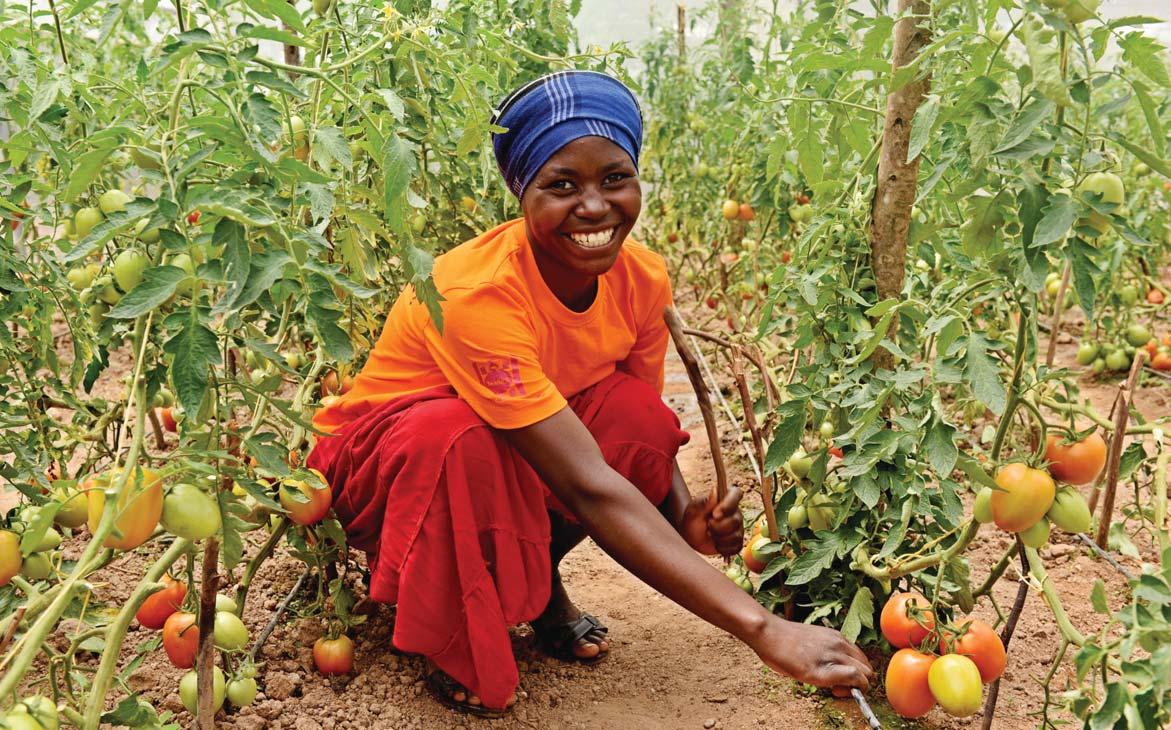
UGANDA
Continental Report
Uganda is betting on parish development model to Transform Agriculture. Collins Hinamundi writes
To Political watchers, Dennis Ssozi Galabuzi is a lucky man, in his political career. He helped the ruling party to uproot a popular but renegade Vice president in a constituency where he had become as entrenched as a baobab tree. A decade later, he lost the same seat in a Robert Kyagulanyi aka Bobi- Wine-driven wave that has now come to be called the red wave.
This was supposed to be the end for him, but like a phoenix he has risen out of his burnt ashes, this time as a point man in President Yoweri Museveni’s 470 Billion shillings or 136 million dollar plan to transform household incomes in the country’s smallest unit of governance and production.
The programme known as Parish Development Model is an extension of the approach to development as envisaged under Uganda’s Third National Development Plan, with the parish as the lowest administrative and operational hub for delivering services closer to the people and hence fostering local economic development. There are over 10,594 parishes in the country.
Under the initiative, each parish is supposed to get about 4000 USD dollars in the current fi nancial year to start the implementation of the programme and according to the plan, the parishes will each receive 100 million Shillings or 27000 US dollars with eff ect from the next fi nancial year.
The launch of the programme also operationalized parish Savings and Credit Co-operative Societies (SACCOS) through which people will be able to obtain fi nancing for development.
Speaking during the launch, President Museveni said that the Parish
22 March, 2022 CHERRYAFRICA

UGANDA
Development Model is centred on alleviating poverty through agriculture, even though he acknowledges that this is not the only way out of poverty. He is optimistic that since the chain of bureaucracy has been broken by taking money closer to the communities, the government will see better results.
The fi rst time a devolved production unit like this made it into the national conversation, Uganda’s former Prime Minister John Patrick Amama Mbabazi was running for President in 2016, and one of his big ideas, was something he called the Advanced Sub-county Model, whose sole focus was on turning the sub-county into a unit of production, the parish devel-
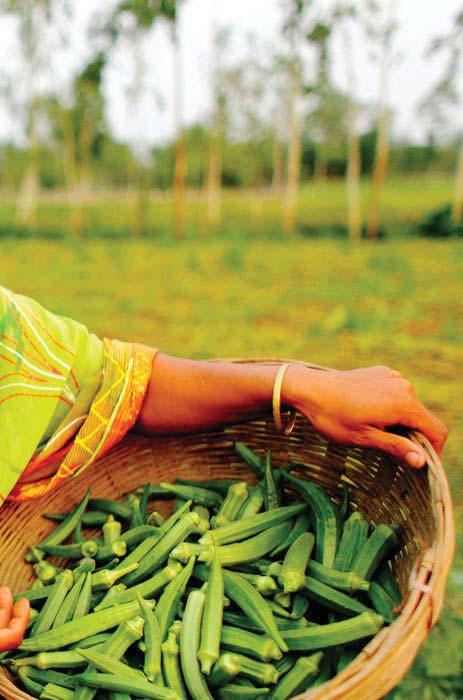
opment model takes it further to the smallest unit, and fi nally gives purpose to the much-maligned job of a parish chief who role was to be the technocrat of the parish.
What’s new?
According to a statement from the Ministry of Finance, Planning and Economic Development, the Parish Model is a strategy that will organise and deliver public and private sector interventions for wealth creation and employment generation at the parish level as the economic planning unit.
“By lifting these households from the subsistence economy, we increase the tax base, we increase our revenue mobilization strategy and the general quality of life which is the ultimate goal of the government,” David Bahati the then Minister of Finance in charge of Planning told a dialogue on local governance in 2021.
However, experts at this dialogue insisted then, that there is nothing new the minister was saying, and that the proof will be in the pudding. Uganda Local government Association, the lobby group that brings together local government leaders, has also queried the structures of the Parish development model, arguing that the local governments already have structures up to parish level.
‘’The main question looming at the back of these Local Government actors is whether the PDM structure will be any diff erent from the Parish Development Plans and the Parish Development Committee structures that were once famous in early to Mid2000.’ The group said in a statement.
This was also raised on the fl oor of parliament as the minister of fi nance presented a budget for the parish development model.
“They have to show us the research they have done, they must give us the data on how many households there are in a parish, how the money is going to benefi t the households and the interventions,” Patrick Isiagi, the MP for Kachumbala County in the eastern district of Bukedea said on April 13 2021, the day the Finance Minister and his technical staff appeared in Parliament to defend the Parish Model Fund.
A research paper from the Advocates Coalition on Development and the Environment also suggests the top to bottom approach has been the bane of these economic transformation programmes, and also caused their demise.
‘ Citizens have severally noted that they were not consulted. It was also observed that citizens were not engaged in some government programmes.’ ACODE argues.
The other fear was on the politicisation of the programme, a fear the state tried to calm, but when the national secretariat for the parish development model was introduced, the critics’ fears was confi rmed, the leadership of the secretariat was in the hands of Ssozi Dennis Ssozi Galabuzi, a former minister who had lost his MP seat, deputised by Jovrine Kaliisa also a former MP, experts would have preferred a Development Economist but instead, this secretariat would be supported by technocrats and direc-
Continental Report
March, 2022 CHERRYAFRICA 23
UGANDA
Continental Report
tors from the diff erent implementing agencies of government. Economists from the government’s Think Tank the Makerere based Economic Policy Research Centre have also warned about politicisation arguing that this will expose the projects under parish development to the same problems and challenges that choked the other programmes.
What next?
Speaking at the launch of the Parish Development Model in Eastern Uganda, President Museveni said his government had laid the foundation for socio-economic transformation by securing the entire country, building roads, hospitals, schools, water sources, dams to generate electricity and other public services.
“During the recently concluded elections, we promised you that the 2021-2026 term is going to be a Kisanja for creating wealth, jobs and incomes for all Ugandans,” Museveni said.
The President said that the Parish Chief is going to be the coordinator of all Government eff orts at each of the 10,594 parishes and will report to the Sub-County Chief. Each Parish, he added, will have a cooperative society through which Government support will be channelled.
There are still questions, however, on the infrastructure which the Parish development model will run.
In his Advanced Sub county Model, Amama Mbabazi who has since returned to the fold and has been seen hobnobbing with president Museveni, had proposed a complete onestop centre at every sub-county, but in its case, the parish development model looks like a quick injection of a lot of cash into the smallest unit of government.
Where’s the infrastructure?
For the parish model to work, experts are asking the government to make a deliberate investment in the physical and social infrastructure at the parish level.
‘For the PDM to achieve its transformation agenda, it is critical that more investment be made in the road, water and sanitation, rural electrifi cation, post-harvest handling, market, and ICT infrastructures’ Mark Otile a researcher at the Advocates Coalition for Development and Environment advises.
Otile insists that these are the issues that affl ict local governments, and cash injections will be wasted if the issues that increase the cost of the post-harvest process are not handled.
‘A road user satisfaction survey conducted by Uganda Road fund in 2019 revealed that local governments had the lowest overall service provision rating in 2019 compared to Kampala City Council Authority and Uganda National Roads Authority’ He says.
Time for inclusive growth
The Parish development model, however, has found support in Academic circles where development economists believe for the fi rst time, the government has struck the right cord in its eff ort to foster rural transformation.
‘The local government, particularly the parish that is near to the people and therefore capable of enforcing such regulations and achieving the set objectives,’ Professor Augustus Nuwagaba says.
Professor Augustus Nuwagaba a development economist argues that with all its projected challenges the Parish Development Model, may be the solution the country is looking for, and it will need all the support it can get, to be a success.
‘it will be futile for Uganda to continue with exclusive and jobless growth, where the majority continue wallowing in deprivation when a few enjoy benefi ts of so-called growth,’ he says.
For now, Mr Galabuzi’s task is cut out. Will he transform the lives of Ugandans, or will this be another economic transformation project that could have been?
24 March, 2022 CHERRYAFRICA
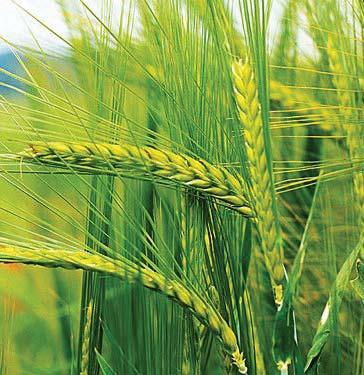
LIBERIA
Jewel Howard-Taylor:

True Champion of Social Gender Equality
That the Vice President of the Republic of Liberia, Jewel Howard- Taylor is Guest of Honour at the Strategic Agricultural Summit in Chinhoyi University of Technology (CUT), Mashonaland West Province in Zimbabwe is apt, baring her antecedents. During the Summit, there will be special recognition of Honour and Award for her support and encouragement to the womenfolk in Liberia, most especially her eff orts in promoting women in Agriculture thus alleviating poverty and bringing about food security in line with Goal One of the Sustainable Development Goals (SDG). Vice President Taylor has used her various public and private positions to advance humanity, especially for the female gender. A classic example is a foundation she has been running for 22 years now and counting. The Jewel Starfi sh Foundation (JSF) was founded by her in the year 2000 as a springboard of opportunities for female empowerment, through the provision of interventions that ensure that JSF benefi ciaries obtain the proper skills and tools needed in the 21st century to learn, grow, succeed and inspire others; and to show by example, that if you educate females, you secure the future of the next generation. This has included: scholarships for females from 7th grade to university, mentorship for grooming young female leaders, entrepreneurship and capacity building, sexual and gender based prevention programmes, social inclusion and protection, and micro credit programmes. As of January 2020, there were
March, 2022 CHERRYAFRICA 25
LIBERIA
Continental Report
more than 1,391 scholarship benefi ciaries on the JSF Scholarship programme nationwide. The expected outcome of the initiative is to reduce the rate of school dropout due to early pregnancy and marriage; improve graduation rates (keep retention rates at 90% or above), and at least 60% of students will successfully pass the WACSSE. The real outcome is that 79.1% of students graduated from high school within this time frame (110 out of 139). In establishing the Foundation, the avowed advocate for the empowerment of women and girls saw it to be about belief and opportunity, an undertaking that is now unleashing the potential of currently over 1,500 adolescent girls living in poverty across the country, so that they can lift themselves and those around them out of poverty. The Foundation seeks to keep girls in school, helping them develop career paths providing mentorship program and implementing training programs (with a training-of-trainer component) for women leaders with the objective of creating diverse networks and building the needed technical and professional skills. The Jewel Starfi sh Foundation is a not-for-profi t organization that is creating a ‘new normal’ for girls – helping create champions of a world in which girls can reach their full potential and the intergenerational cycle of poverty can be broken. Howard-Taylor is inspired by the fact that oftentimes when parents cannot aff ord school fees, they give male children priority over the girls to attend school. This anomaly, she noted, moved her Foundation to undertake the task of supporting and empowering young girls across the country. VP Howard-Taylor added: “When a girl has self-belief and is supported by her family and community; when she’s empowered with skills, ideas and knowledge; when she has access to services, role models and other girls, when she is visible and vocal – she can demand to stay in school, to get healthcare, and to get married and have children when she chooses.” Vice President Jewel Cianeh Taylor has had an illustrious private and political career. In 2005, she was elected to the Senate of Liberia in Bong County as a member of the National Patriotic Party. She served as the Chairperson of the Senate Health and Social Welfare Committee on Gender, Women and Children. While her husband was president, she held a number of offi cial posts in the Liberian government, including Deputy Governor of the National Bank of Liberia (forerunner to the current Central Bank of Liberia), President of the Agriculture Cooperative and Development Bank (ACDB) and Mortgage Financing Underwriter of the First Union National Bank. In addition, she focused on educational, health and social projects. Taylor holds a graduate degree in banking and two bachelors' in banking and economics. On 21 December 2011, she graduated from the Louise Arthur Grimes School of Law of the state-owned University of Liberia. Two days later, she was crowned with a new holder of the title "Madam Suakoko", an honorary Bong County title memorializing the namesake of the Suakoko District. In 2017, Jewel was chosen by George Weah as his running mate on the newly formed Coalition (CDC) ticket. Following a run up in late 2017, she became the fi rst female Vice President of Liberia when her party won the elections. She has demonstrated exceptional capabilities and proven to be a role model in her new role.
26 March, 2022 CHERRYAFRICA The Jewel Starfi sh Foundation is a notfor-profi t organization that is creating a ‘new normal’ for girls – helping create champions of a world in which girls can reach their full potential and the intergenerational cycle of poverty can be broken

